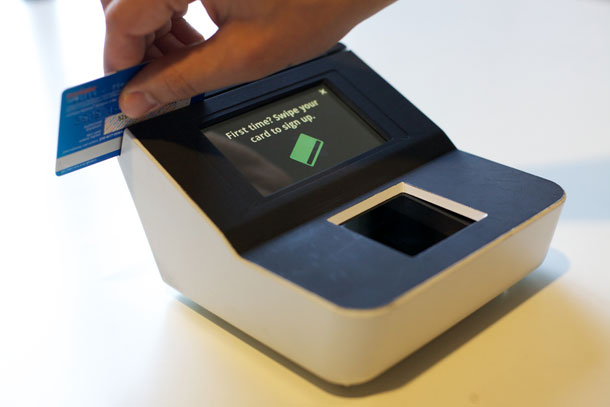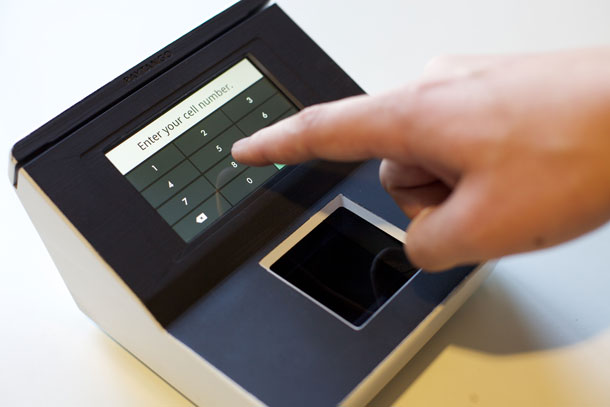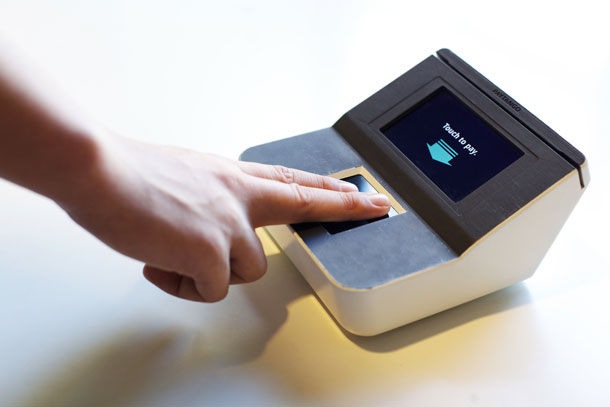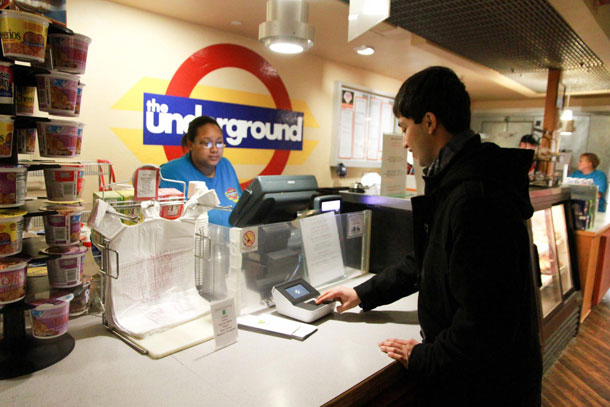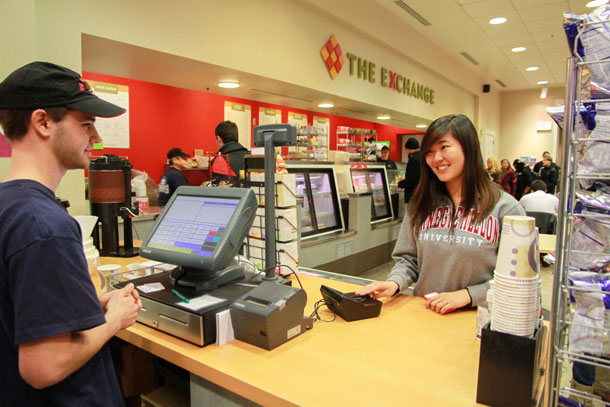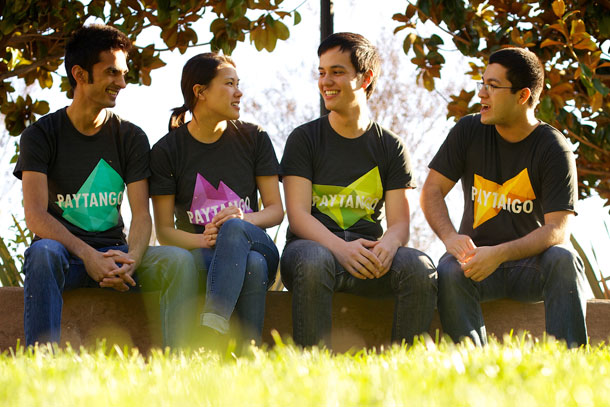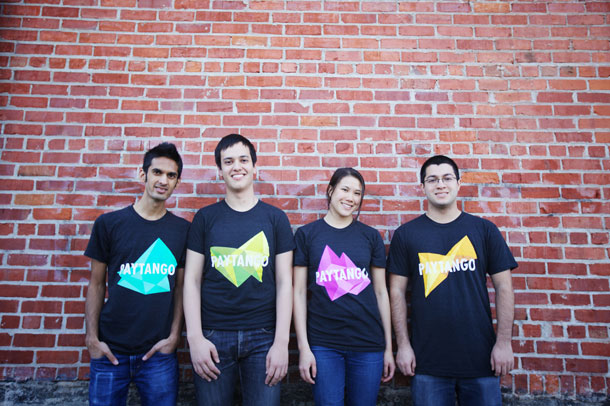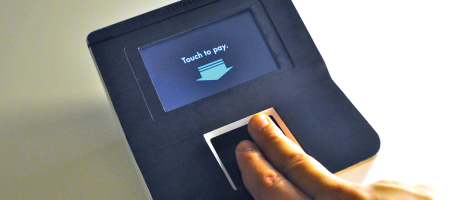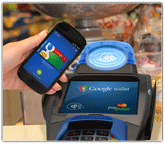Company tangos with biometric payments
Startup believes it can succeed where others have failed
17 September, 2013
category: Biometrics, Financial
Five years ago, a trailblazer in the field of biometric payments crashed and burned. Pay By Touch wanted to change the way consumers paid for goods at the point of purchase, requiring only a fingerprint to authorize a transaction. The service fell short of mass consumer adoption, and the company – famously known for burning through money – closed abruptly after a six-year run.
Now, a new startup is once again testing the waters of biometric payments. Can PayTango succeed in bringing biometric payments to the mainstream where its predecessor failed?
PayTango is the brainchild of Christian Reyes, Brian Groudan, Kelly Lau-Kee and Umang Patel, four students from Carnegie-Mellon University. “We were working on a couple of different ideas to consolidate all the cards in your wallet into to one card,” says Patel, CEO of PayTango. “We ended up using biometrics because we realized that from an identity standpoint, it makes a lot more sense to identify the person and not just the card.”
PayTango replaces the cards in a wallet by attaching a biometric factor to those accounts. “Anything you’d have a card for, we can store that data and associate it with your biometric,” says Patel. This includes payment cards, loyalty cards, student IDs and more.
It takes about fifteen seconds for a consumer to register for the service at the POS terminal. “One of our big priorities was to make sure that it doesn’t hold up the line and is something that people can easily do,” says Patel.
“The PayTango terminal basically takes your two fingerprints and then it associates them with any card data,” says Patel. To enroll in the system, a consumer touches two fingerprints to the fingerprint reader and then swipes the card they want to associate to those fingerprints. Then they input a third piece of information – currently a phone number – as an identifier, says Patel.
Once enrolled, they no longer need the card.
“We’ve developed technology to transmit that card data using the biometric input, so if it’s to a POS system or whatever’s on the other end, it receives the exact same input as it would otherwise,” says Patel.
If a user’s credit card gets lost or stolen, he wouldn’t have to do anything special to deactivate the PayTango function. The user would report their card lost or stolen with the credit card company, and once that account is deactivated, the card will no longer work with PayTango. Upon receiving a new card, the user can re-register it at any PayTango terminal, says Patel.
The PayTango terminal is a plug-and-play device designed to work with current POS systems. Prototypes currently run about $1,000 per unit, says Patel, adding that the company is working on ways to bring down those costs.
PayTango is in the pilot stage of testing its product. It conducted a closed pilot in February and then started a more open pilot on the campus of Carnegie-Mellon in late March. The second pilot took place at three locations on campus and was designed to work exclusively with student IDs that have meal plans attached.
The company took a silent approach and installed the terminals without any formal promotion. “We stick a terminal there and see what people do with it,” says Patel.
Within the first 10 days, the program registered 400 to 450 users and completed more than 2,000 transactions. “People are using it regularly and seem to like the product,” says Patel.
Patel hoped that by the end of the semester, the product would reach some sort of critical mass. “That’s one of our big goals, to get that critical mass and show that biometrics is a viable solution for ID card systems and that it’s socially accepted.”
Social acceptance of biometrics is another reason PayTango hopes that it will succeed where others have failed. “I think there’s a movement toward people valuing convenience,” explains Patel. “You have all these emerging mobile technologies like Google Wallet. People are using them in for their convenience, so I think the timing is right at this point.”
“When Pay By Touch started ten years ago the landscape was completely different,” he sasy. “People’s perception of technology and privacy was very different from what it is today.” He explains that Google and Facebook didn’t dominate consumer life as they do now and this has led to significant change.
“Entry point is also important,” says Patel, noting that Pay By Touch started at supermarkets where there’s a wide range of consumers in all ages and they all have a different perception on privacy and security. “College campuses are more homogenous and liberal so you can get critical mass there,” says Patel. “There are a lot of small things that you can do right that will improve your chances of making something like this work and become really successful.”
Still, PayTango’s success hinges on the willingness of consumers and merchants to use it as a form of payment, and currently they are satisfied with their plastic cards, says David Kaminsky, senior analyst at Mercator Advisory Group.
Biometric payments may offer advantages in convenience and security, but Kaminsky doubts this will be enough.
“Consumers and merchants aren’t begging for a more secure alternative to card based payments,” he says. “Our current system, although imperfect, is acceptably secure.”
“Merchants are unlikely to invest in new hardware that supports biometrics, especially because fraud liability for card present transactions generally defaults to the card issuer,” explains Kaminsky. “Additionally, consumers are generally slow to change their habits when it comes to handling their finances – including making payments – unless they have a strong motivation to do so. Cards work well enough, so there is no such motivation among consumers.”
PayTango’s initial plan is to start with universities like Carnegie-Mellon. It is in talks with others according to Patel.
“From there we’ll probably cover access control. This makes sense early on, because we’re not really a payments company,” he says. “It’s really biometric identification as a service, providing infrastructure where you can unplug a card reader and plug in our biometric reader and everything works out of the box.”
“Next year, we’re going to focus on very specific verticals to get that adoption – universities, gyms and a other places that would see very clear value in it,” says Patel.
“We want to make biometrics a little more mainstream. Right now it’s primarily used for high security applications, but we see this as a better interaction and a way to do day-to-day things,” says Patel.
“Ultimately,” he concludes, “it would be great if everyone had PayTango and could go from store to store paying with a fingerprint.”
History, however, is against the upstart company. Still Patel has a strong sense that times have changed and the market may finally be ready for biometric payments.

